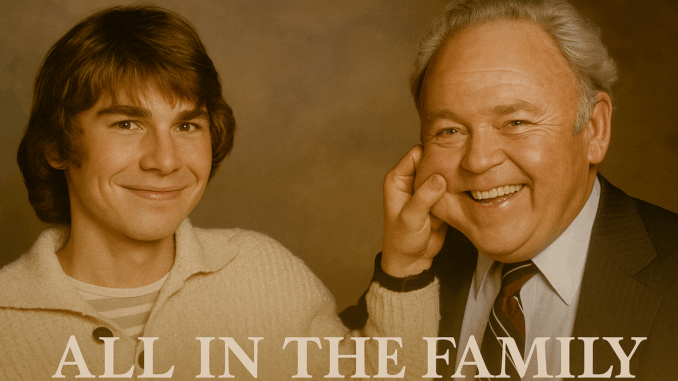
Archie Bunker remains one of television’s most memorable characters. Played by Carroll O’Connor, Archie was the heart of All in the Family, a sitcom that broke barriers in American television from 1971 to 1979. While Archie started as a stubborn, outspoken, and often narrow-minded character, he gradually evolved in surprising ways throughout the series. Here are 10 key ways Archie Bunker changed over time.
1. From Intolerant to More Accepting
In the early seasons, Archie was openly prejudiced toward people of different races, religions, and lifestyles. Over time, however, his encounters with diverse characters softened his views, showing glimpses of acceptance and growth.
2. Developing a Stronger Bond with Edith
Archie’s relationship with his wife Edith was often marked by impatience and frustration. As the series progressed, Archie displayed deeper affection, reliance, and respect for Edith, especially during emotional storylines.
3. Shifting Views on His Son-in-Law
Archie constantly clashed with his liberal son-in-law, Mike “Meathead” Stivic. Though the arguments never stopped, Archie began to show reluctant respect for Mike’s intelligence and passion, acknowledging him as a valuable part of the family.
4. Becoming a More Compassionate Father
Archie’s relationship with his daughter Gloria matured as well. While he was controlling and dismissive at times, he gradually demonstrated more empathy, particularly as Gloria faced struggles in her marriage and life.
5. Adapting to a Changing America
The 1970s brought major cultural shifts in the U.S., and Archie—though resistant at first—was forced to confront issues like women’s rights, civil rights, and generational change. His evolution reflected the struggles of many Americans at the time.
6. Balancing Humor and Vulnerability
Archie started as a source of comedic tension, but his character evolved into someone capable of vulnerability. Episodes exploring his fears, insecurities, and mistakes allowed audiences to see him as more than just a caricature.
7. Growth as a Worker and Provider
Initially shown as a rigid, blue-collar worker who distrusted unions and authority, Archie slowly acknowledged the challenges of economic shifts and workplace changes, adapting in ways that revealed his resilience.
8. From Self-Centered to Community-Oriented
As the show developed, Archie took on more responsibility in his community, including running Archie Bunker’s Place in the spin-off. This gave him a broader role and highlighted his ability to connect with others beyond his family.
9. Showing Loyalty and Friendship
Although Archie often insulted his neighbors and friends, he grew to show genuine loyalty. His evolving friendships—especially with those he initially distrusted—reflected his hidden capacity for acceptance.
10. Becoming a Cultural Icon
Archie’s character development mirrored the cultural shifts of the 1970s. His transformation from a narrow-minded everyman into a more layered and sympathetic figure helped make All in the Family one of the most important shows in TV history.
Final Thoughts
Archie Bunker’s journey in All in the Family was more than just sitcom humor—it was a reflection of America’s growing pains. His evolution from stubborn prejudice to reluctant acceptance made him not only relatable but also unforgettable. Archie remains a reminder that change, even when slow and imperfect, is possible.
